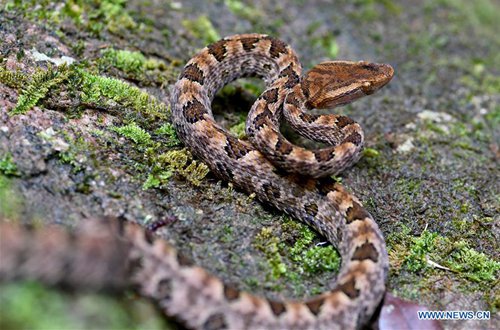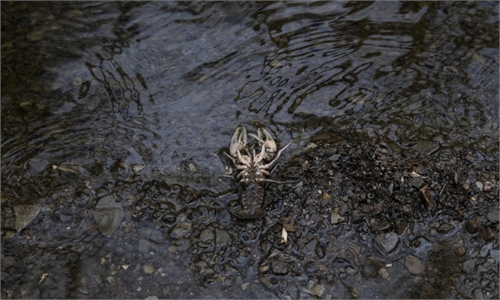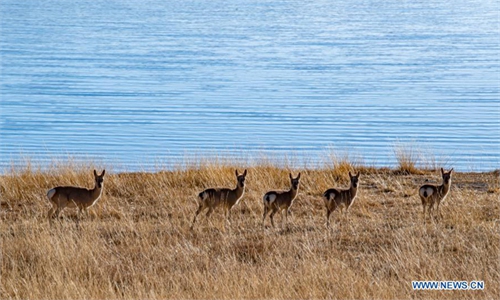ARTS / CULTURE & LEISURE
Prehistoric snake fossils discovered in Guangxi

Photo taken on Aug. 23, 2019 shows a snake in the Wuyishan National Park, southeast China's Fujian Province. The Wuyishan National Park features rich biodiversity due to its unique natural environment. (Photo: Xinhua)
Snake skeleton bones dating back to 6,000 years ago have been discovered at the Baojianshan Site in south China's Guangxi Zhuang Autonomous Region.
Discovered by archaeologists of the Institute of Vertebrate Paleontology and Paleoanthropology (IVPP), the snake remains included a midsection of a python's tooth bone and number of snake vertebrae.
Shi Jingsong, the project's leader, said the fossil relics belonged to the python, king cobra and elaphe moellendorffi species.
After measuring the biggest vertebra piece belonging to the ancient python, Shi's team said the creature would have been at least 4.58 meters in length.
It is the biggest ancient python to have been found, compared to the previous record of 3.56 meters documented in the Fauna Sinica, China's fundamental "textbook" for documenting the country's animal resources.
Lu Ting, an expert on reptiles, told the Global Times that Guangxi has China's richest snake resources. The poisonous king cobra, the python and elaphe moellendorffi can still be found in Guangxi today.
Shi revealed that there were "burning marks" and "traces of hammering" found on the snake bones. "We should not rule out the possibility these marks show prehistoric people processing meat through cooking," Shi said.
The Baojianshan Site is not the only spot with fruitful archaeological resources along Guangxi's Zuojiang River.
With more than 1,800 paintings of animals and human figures, the Zuojiang Huashan Rock Art Cultural Landscape is also located on the river. Wall paintings can be seen on the cliffs, showing the culture of ancient Chinese people dating from the 5th century BCE to the 2nd century CE. It was listed as a UNESCO World Heritage site in 2016.



